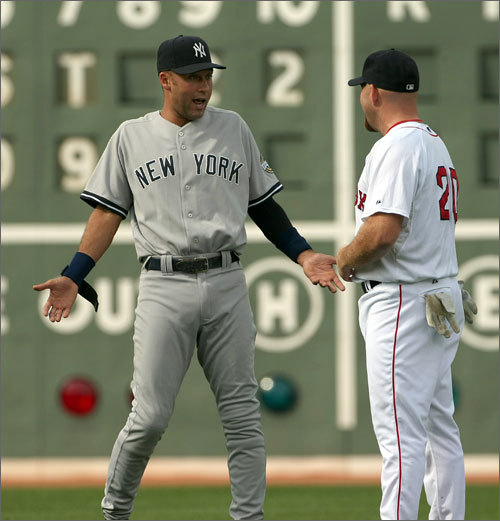We had contemplated driving down to the Tax Day Tea Party in Washington, DC, today––I took a couple of days of off work specifically for that purpose––but ended up not going for a variety of reasons, some logistical and some due to a basic uneasiness with the phenomenon itself.
Don’t get me wrong: I regard the spontaneous appearance of the tea parties as a positive sign, one of the only remaining indications that there is any spirit whatsoever among the broader population to resist the abuse of government power. Nevertheless, I have reservations about the effectiveness of attending such events. It’s not obvious to me how milling about with large crowds of people holding mixed premises can be very productive. Religious conservatives, libertarians, party-line Republicans, and Objectivists do not see eye to eye on everything, to say the least. If every speaker at these events were a Yaron Brook or John David Lewis, it would be wonderful. But most speakers are not articulate, consistent defenders of liberty; few mention or even seem to understand fundamentals. It is rare to hear individual rights mentioned at all. Most of the speeches are either concrete-bound enumerations of grievances (e.g. taxes, deficits, etc.) or meaningless platitudes that serve only to whip up a crowd. (“Let’s take back this government!” Rah. Rah.) Unless I’m at Fenway Park, I don’t like large crowds chanting, even if they are justified in doing so.
I admit that a big part of my being put off by the tea parties has to do with my lifelong revulsion of protests, exhibitions that I’ve always deemed to be invariably leftist, anarchistic, anti-intellectual affairs––and that is a completely unfair characterization in this case. The tea party protests are shockingly civilized as far as I’ve seen, and are far more intellectual and substantial than anything the left has had to offer in at least half a century. The few isolated reports in the media about tea party protesters spitting, hurling racial epithets, or brandishing guns are the exceptions that prove the rule. If that is the extent of distasteful behavior––if that is all a hostile media could find, bend, or fabricate in over a year of desperate yearning to discredit the movement, after hundreds of protests nationwide, and in the face of a general call from leftist organizations to infiltrate and sabotage the gatherings––then it is truly remarkable.
In any case, Lynne and I ended up going to the much smaller (not to mention conveniently located) Tax Day Tea Party in Lowell, MA. As we suspected, it was a mixture of mostly good and a couple of not-so-good elements. The best part was that we met a couple of our friends there, one of whom was brave enough to be the first speaker. She fared very well, reading from the Declaration of Independence and making a few comments. The crowd was not too large. (I am terrible at estimating numbers, so I am not going to try.) Everyone was very polite and courteous. The forest of signs were universally civil and many were very witty and clever.
I had come empty-handed, but I actually ended up holding one of the signs that my friend had brought with her. It read “Read Atlas Shrugged - Ayn Rand was Right” on one side and “This is John Galt Speaking” on the other. This placed me in the bizarre position of holding a sign at a public protest even though hell had not yet frozen over––something I would have not thought possible! To my surprise, I actually liked it, and it afforded me an opportunity to talk to some people about Ayn Rand and answer some questions.
The one element of the gathering that I considered to be negative was a brief injection of religious faith into the discourse. This was basically limited to one speaker, a military (or retired military) man who loudly insisted that good Americans believe in God, believes that the Ten Commandments are the source of law, and demanded that prayer be put back into schools. He is probably a perfectly decent and respectable man, and I thank him for his military service, but if he takes the position that man’s rights are derived from God and thus do not exist in the real world, then he is doing the work of our enemies. Apart from him, though, no one else that I saw or heard brought up religion.
All in all, it was a positive experience, though it did nothing to convince me that such gatherings have much practical benefit. As I indicated before, the importance of the tea party protests lies in the spirit that it signals; their very existence indicates that freedom is not yet dead. However, to effect the broad cultural change that is required to reverse our plunge toward serfdom will require a much more articulate and consistent message.













